 If a straight line be divided into any two parts, the square of the whole line is equal to the squares of the two parts, together with twice the rectangle contained by the parts. If a straight line be divided into any two parts, the square of the whole line is equal to the squares of the two parts, together with twice the rectangle contained by the parts.  Elements of Plane Geometry - Page 64by Thomas Hunter - 1878 - 132 pagesFull view Elements of Plane Geometry - Page 64by Thomas Hunter - 1878 - 132 pagesFull view - About this book
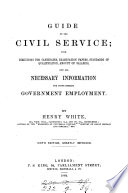 | Henry White - 1864 - 156 pages
...angles of a triangle are together equal to two right angles. 4. If a straight line be divided into any two parts, the square of the whole line is equal to the squares of the two parts, together with twice the rectangle contained by the parts. 5. Divide a given... | |
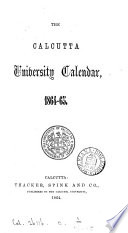 | University of Calcutta - 1864 - 388 pages
...be equal to that intercepted between the second and third. 5. If a straight line be divided into any two parts, the square of the whole line is equal to the squares on the two parts, together with twice the rectangle contained by the parts. To what algebraical... | |
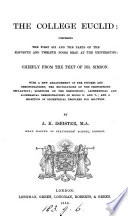 | Euclides - 1865 - 402 pages
...parts, together with the square of the aforesaid part. Prop. 4. If a straight line be divided into any two parts, the square of the whole line is equal to the squares of the two parts, together with twice the rectangle contained by the parts. Cor. The parallelograms... | |
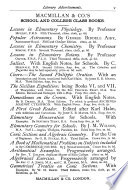 | Edinburgh univ - 1868 - 336 pages
...greater angle shall be greater than the base of the other. 3. If a straight line be divided into any two parts, the square of the whole line is equal to the squares of the two parts, together with twice the rectangle contained by the parts. 4. The diameter... | |
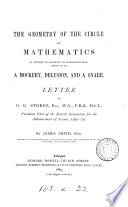 | James Smith - Mathematics - 1869 - 492 pages
...2-8125)} = (39-0625 + 21-97265625) = 61-03515625 = AC*: or, in other words, the square of the line AC is equal to the sum of the rectangles contained by the whole AC and each of its parts AB and B C. So far Euclid would appear not to be at fault, either in the twelfth... | |
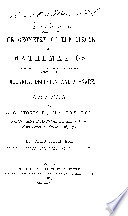 | James Smith - Circle-squaring - 1869 - 459 pages
...2-8125)} = (39-0625 + 21-97265625) = 61-03515625 = AC2: or, in other words, the square of the line AC is equal to the sum of the rectangles contained by the whole AC and each of its parts AB and B C. So far Euclid would appear not to be at fault, either in the twelfth... | |
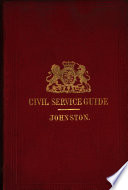 | Robert Johnston (F.R.G.S.) - Civil service - 1869 - 196 pages
...angles of a triangle are together equal to two right angles. 4. If a straight line be divided into any two parts, the square of the whole line is equal to the squares of the two parts, together with twice the rectangle contained by the parts. 5. Divide a given... | |
 | James Smith - 1870 - 634 pages
...Now, by Euclid : Prop. 2 : Book 2 : '' If a straight line (AB) be divided into any two parts (AC, CB), the square of the whole line is equal to the sum of...rectangles contained by the whole line and each of its parts :" and I shall proceed to prove that this Theorem of Euclid is irrefragable. It is self-evident,... | |
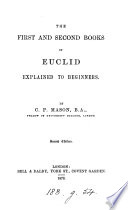 | Euclid, Charles Peter Mason - Geometry - 1872 - 216 pages
...contained by AB and BC, for it is contained by BE and BC, and BE is equal toAB. Consequently the Q on AB is equal to the sum of the rectangles contained by the whole line (AB), and each of the parts (AC and CB) into which it is divided. Here again the beginner must observe... | |
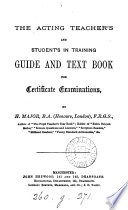 | Henry Major - Student teachers - 1873 - 588 pages
...equal to the rectangle AC, CB, together with the square of BC. -If a straiyht line be divided into any two parts, the square of the whole line is equal to the squares of the two parts, together with twice the rectangle contained by the "tarts. ca Let AB be divided... | |
| |